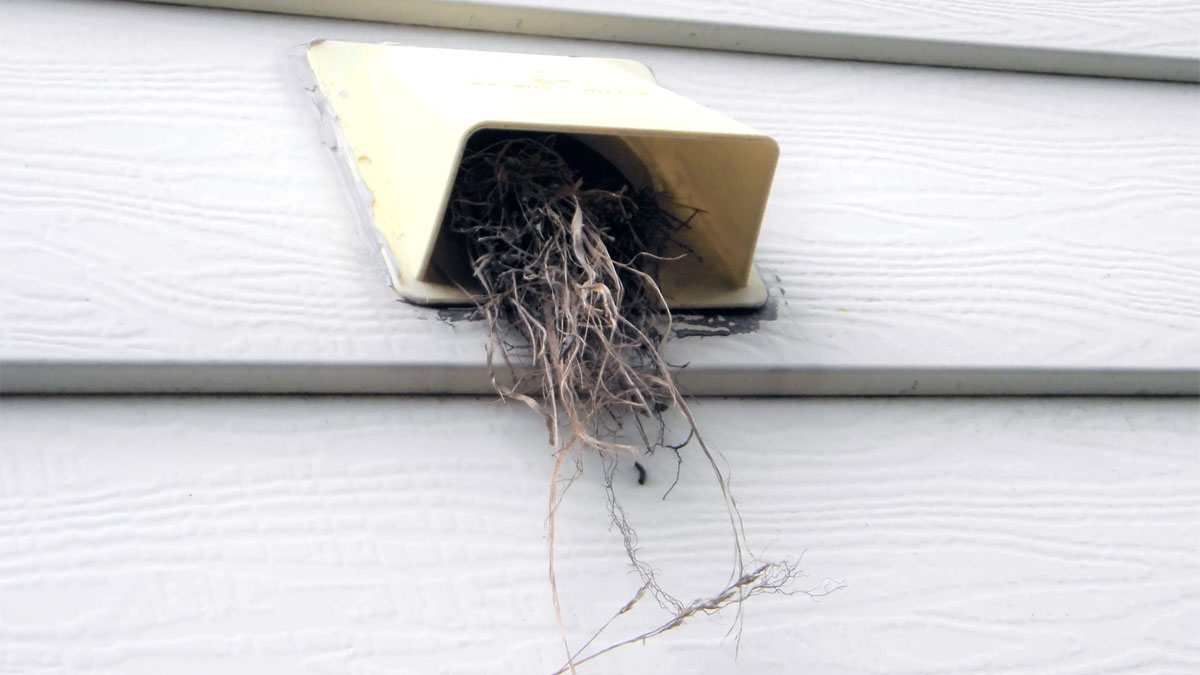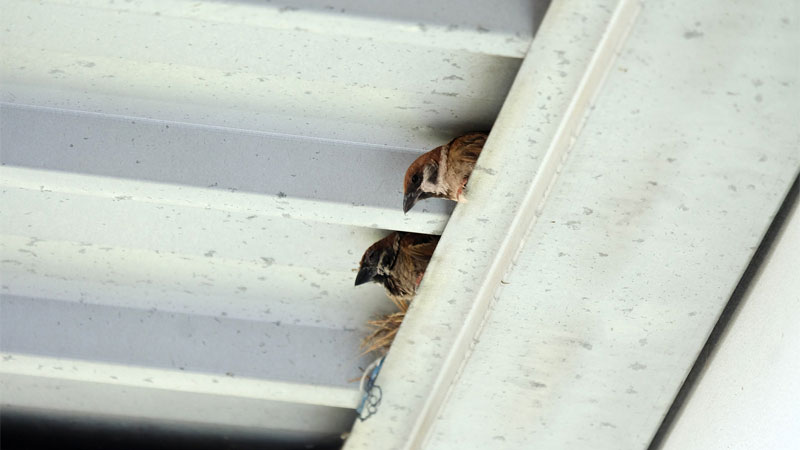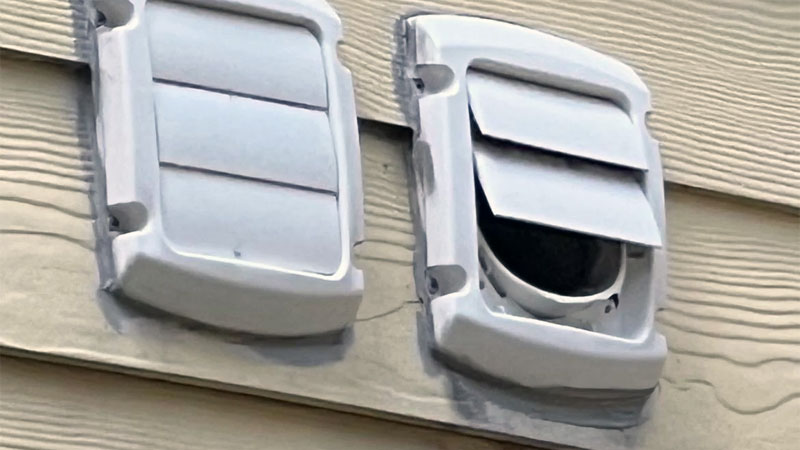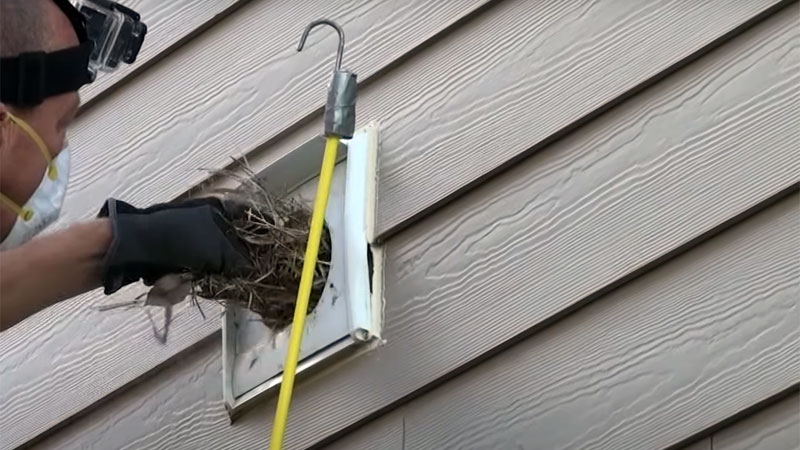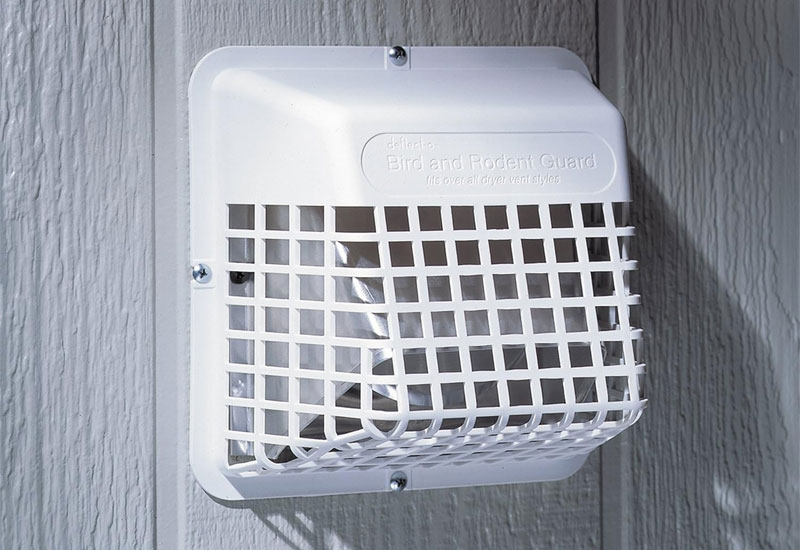Have you heard odd noises coming from your bathroom vent? Or seen birds flying in and out of one? Maybe you’ve noticed nesting materials poking out? If so, you’re not the only one dealing with uninvited feathered guests.
Lots of homeowners discover that birds view many exterior vents as perfect spots to build nests. These vents exhaust systems like dryers, furnaces, attic fans, and stove hoods. Sparrows and starlings especially like moving into them.
The birds often sneak through louvers or flip-up doors. So even vents that seem protected end up housing avian squatters. Now you may be wondering — how do I get them out of there?
Identify the Nesters
First, confirm the bird is a house sparrow or European starling. Almost all other species cannot be disturbed due to the Migratory Bird Treaty Act.
If that’s the case, you must wait for the eggs to hatch and the birds to leave before sealing the entry point to prevent future nests.
However, if it is a sparrow or starling, and the nest is new without eggs or young, remove the nesting material. Then seal up the opening so the bird finds somewhere else to nest.
While sealing one vent, check for others that need covers too.
What If The Nest Already Has Young?
If there are baby birds (nestlings) in the nest, you’ll want to avoid harming them. So be patient, unless the nest poses a safety risk like blocking a dryer vent.
The young may chirp loudly, but they leave the nest after 10-14 days for sparrows or up to 21 days for starlings. At that point, they can fly away.
Once the babies have fledged, remove the empty nest. Then install a vent cover to avoid repeat invasions.
What If the Full Use of the Vent is Needed Sooner?
Safety comes first. If you need full vent access before the young birds can leave, you’ll have to evict the nest humanely. Here is the process:
- Select a substitute nest location as close as possible to the original site. Choose somewhere sheltered from weather and sunlight. Use a small wicker basket or plastic jug with a U-shaped entrance cut in it. Poke drainage holes in a plastic jug nest.
- Transfer as much original nest material as possible into the replacement nest. Then carefully move the nestlings into it.
- Retreat to an observation point near enough to see the nest but far enough away for the parents to return and resume caring for the young.
- Watch for the adult birds to come back. If they don’t start feeding the babies within a couple hours, contact a wildlife rehabilitator for assistance.
Bird Removal From Vent Procedure
You often discover vent invaders during spring nesting season. European starlings in particular view the dry, secluded spaces as prime real estate. However, birds can spread parasites, diseases, and other hazards to human residents.
In general, specialized wildlife control services are best equipped for safe removal. Some pest treatments also require licensed professionals. But if tackling it yourself, follow these basic steps:
Step #1 – Determine Type of Bird
Begin by identifying what type of bird is nesting in the vent. Learn about its behaviors and habits. This information allows you to gauge how settled in the bird is.
For example, early spring nests tend to be less established since breeding season has just started. It’s easier to evict birds that have only recently moved in versus ones incubating eggs or rearing hatchlings. Assessing timing and progress this way helps determine the best removal strategy.
Step #2 – Determine Size of Nest
Ideally, you’d use a fiber optic scope to inspect inside the vent pipe and assess the situation. Check how long the bird has occupied the space based on the nest size and amount of built up debris. You can find scopes for around $200 at most large hardware stores.
If you’re like most people and don’t want to spend $200 for a scope, you’ll need to get creative for inspection. First peek inside carefully with a flashlight and small mirror. This basic view combined with vent sounds can reveal nesting activity. Rustling may signal birds working or feeding young.
Monitor entrance activity as well. Frequently coming and going likely means a settled-in dweller.
Still unsure of nest size? A $50 smartphone snake camera lets you snap pictures downrange. For an even thriftier homemade scope, poke a bent mirror around the vent opening and shine a light. Be gentle—the goal is assessing occupancy, not endangering wildlife or equipment.
Step #3 – Buy a “Fish”
Invest $40 in a vent cleaning “fish” tool from a big box home improvement store. This pole device with a hook attachment lets you snag and extract nest debris from the safety of outside.
Carefully fish out material each pass without worrying about snake bites or scratches! For quicker results, turn on the vent fan to dislodge some bits. But protect eyes as pieces may fly out fast once loosened by the airstream. Wear goggles if handy.
Keep fishing until the pipe looks cleared. Ensure removed debris lands into a trash bag, not circulating back indoors. While not required, this handy gadget beats poking blindly with improvised hooks. But take care as metal hooks can damage delicate ductwork when scraped aggressively around corners.
Step #4 – Disinfect
Never skip disinfecting post-removal! Birds carry disease-causing bacteria, viruses, mites and parasites. While bleach solutions sanitize, robust commercial treatments better eliminate hazards. However, anti-mite chemicals require licensed professionals as misuse risks contamination.
Attempting full fumigation yourself wastes money and leaves your home vulnerable. Removal pros have training, gear, medical-grade chemicals and technique specifically for vent cleaning. Don’t risk your family’s health to save dollars upfront.
DIY removal seems cheaper but lacking proper disinfection, preventable illnesses spread, costing more long-term. Proper treatment protects against nasty microscopic hitchhikers.
Effective Vent Covers
Hardware stores sell commercial covers for dryer and bathroom vents. Dryer vent covers must allow access for cleaning out lint buildup.
For attic and stove vents, attach galvanized 18-22 gauge 1⁄2 inch hardware cloth. Make sure any louvers or flip doors still open fully.
Before installing any cover, remove all nest material so the vent works properly. Heavy debris may require professional cleaning or replacement.
Typical Professional Bird Removal Costs
Professional vent cleaning services vary in price depending on your situation whether for your home or business. However, you can expect to budget the following average costs:
- Removing one bird from a residential home – $200
- Taking away a nest of birds from an attic, plus repairs – $500
- Removing one bird from a grocery store – $700
- Removing a hawk from a warehouse – $900
- Installing 100 feet of spikes for birds on a building sign – $1000
- Installing some exclusion netting for a gas station roof – $2000
The catch with the prices is that there are lots of variables that can affect the final cost of a bird removal from vent. The size of the building, the height, the complexity of the place, other deterrents (shock tracks, needle strips or netting), the number of birds and other factors can influence the cost a great deal. The best thing is to call a professional bird removal service and request an estimate.
Thoughts on DIY Bird Removal
Bird removal is trickier than it appears. You can try tackling it yourself using the steps above. However, contacting a professional company is advisable for safely eliminating hazards completely.
Birds introduce serious risks beyond nuisance noises or dirt. They spread illness-causing parasites, bacteria, and viruses into vents that circulate indoors and get inhaled. Their nest materials also spark dangerous blockages. Vents clogged by debris become unable to ventilate smoke if a fire breaks out, creating tragedy risks.
Take every precaution by keeping passages clear and properly disinfected. Invest in durable vent covers too since prevention beats future eviction. Don’t take chances with makeshift DIY fixes. Rely on reputable services using hospital-grade remediation chemicals and procedures for ensuring human health and safety from vent-inhabiting menaces.
- How to Identify Skunk Poop (With Pictures) - April 1, 2024
- You Really Don’t Need That Opossum Trap - January 4, 2024
- How to Set a Mouse Trap Without Getting Hurt - December 28, 2023

